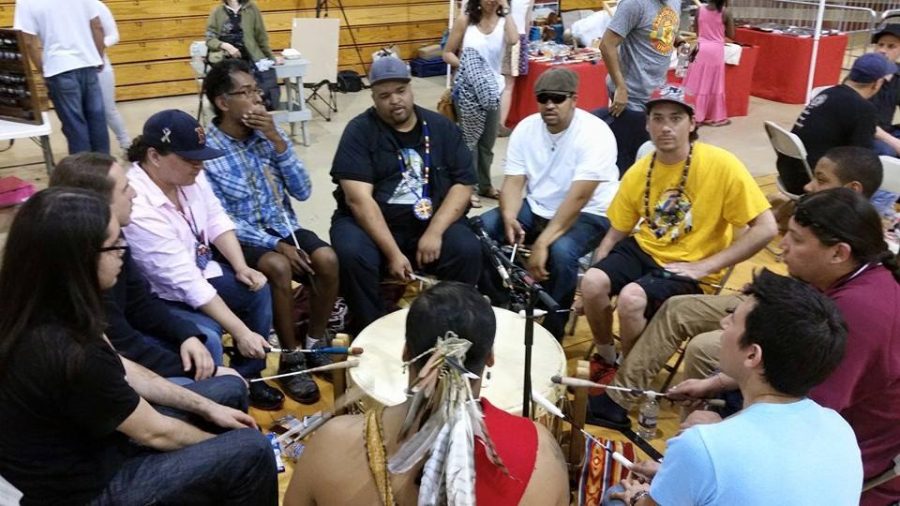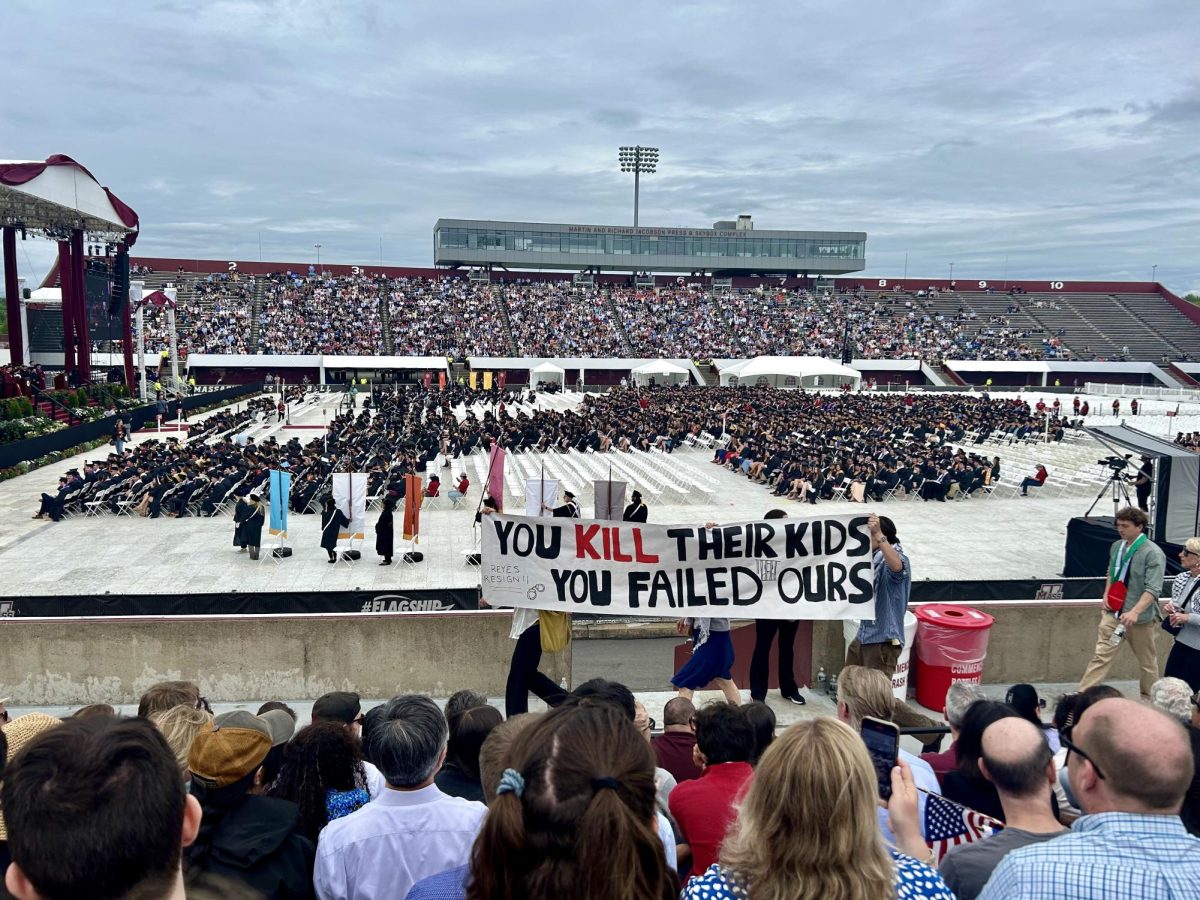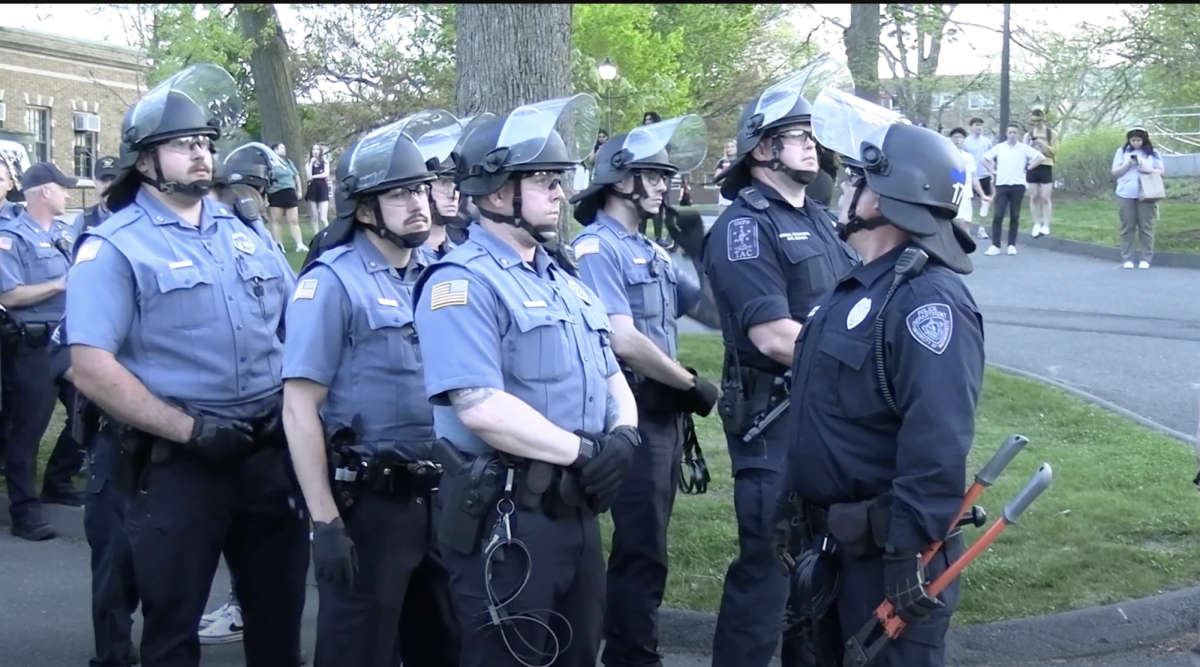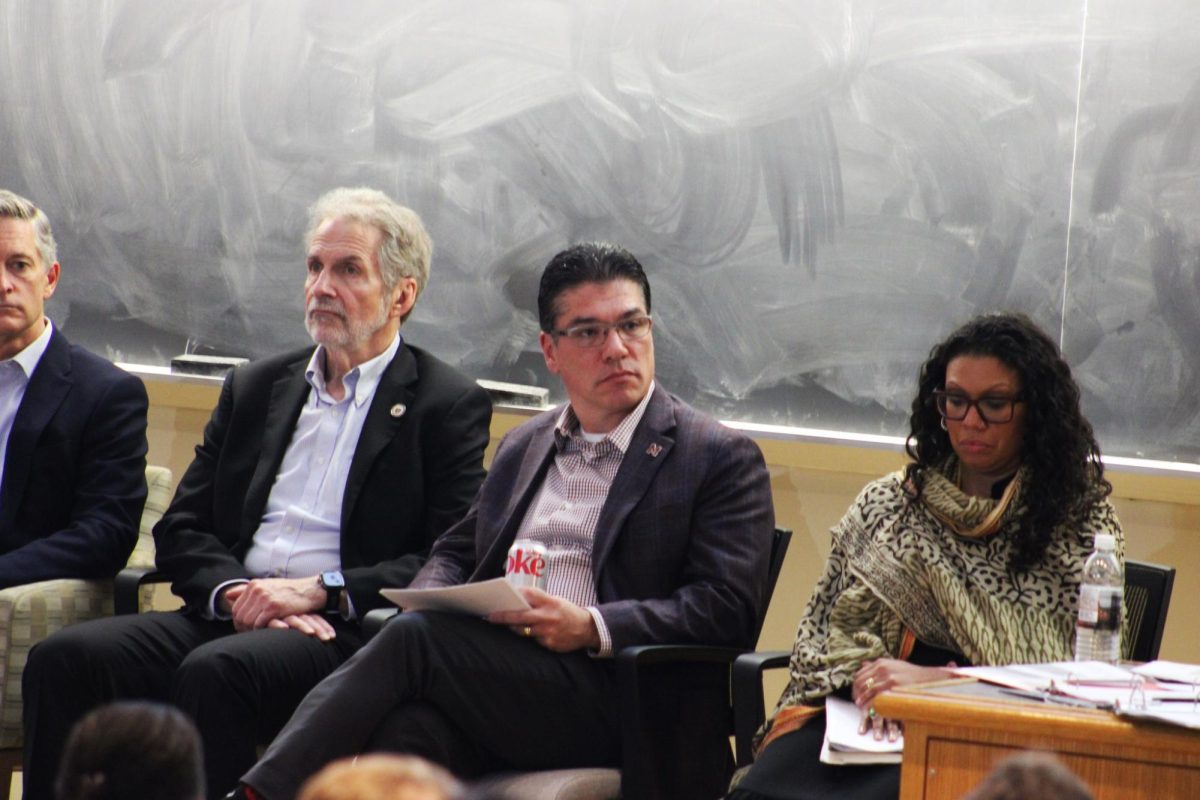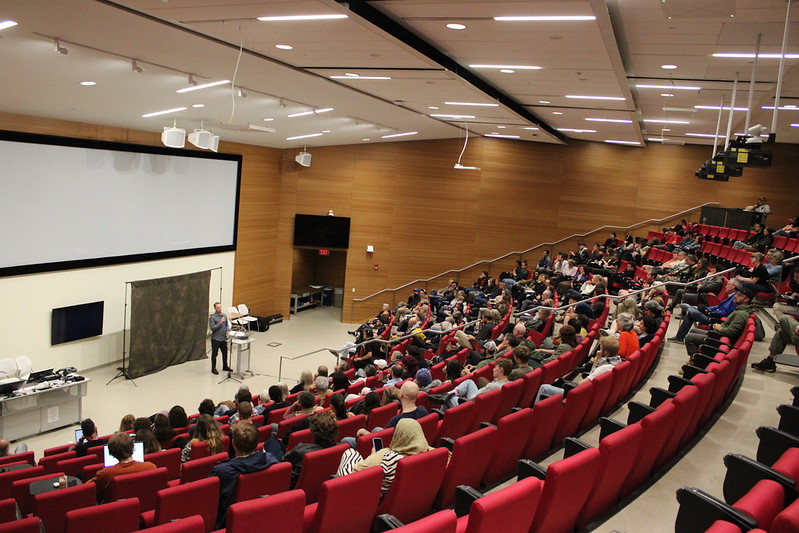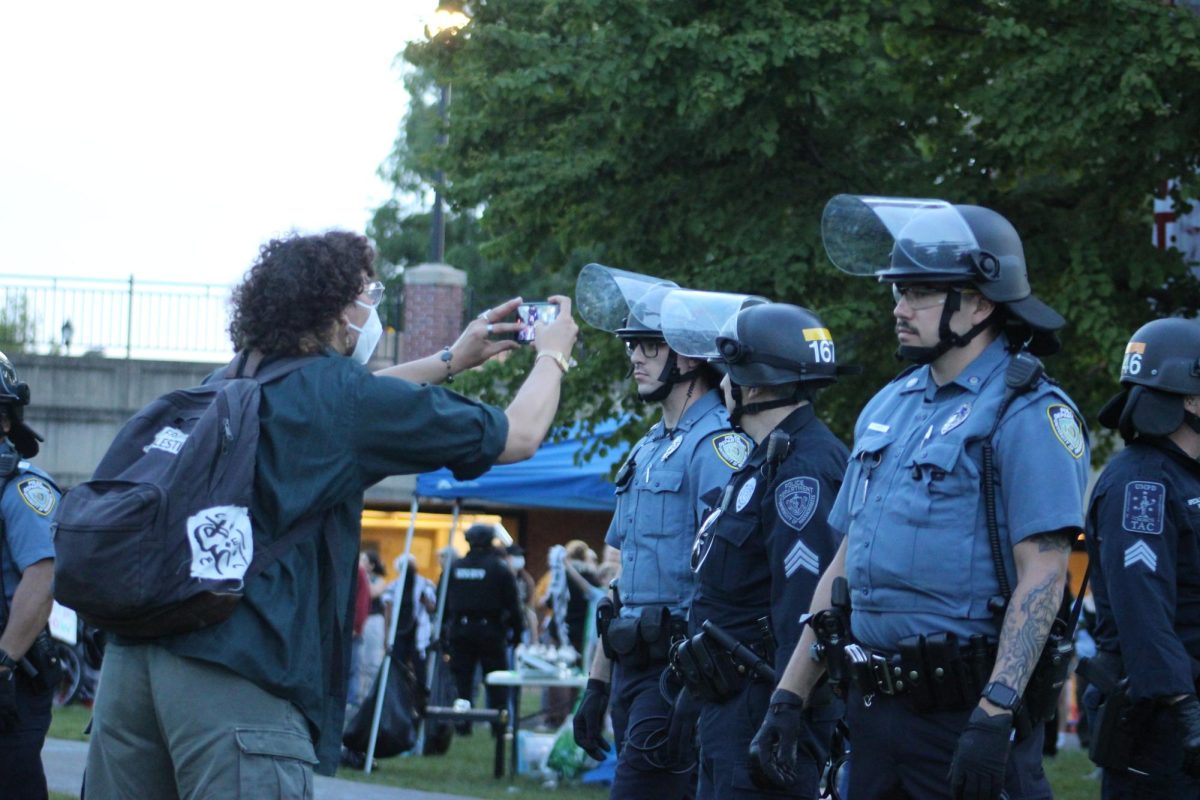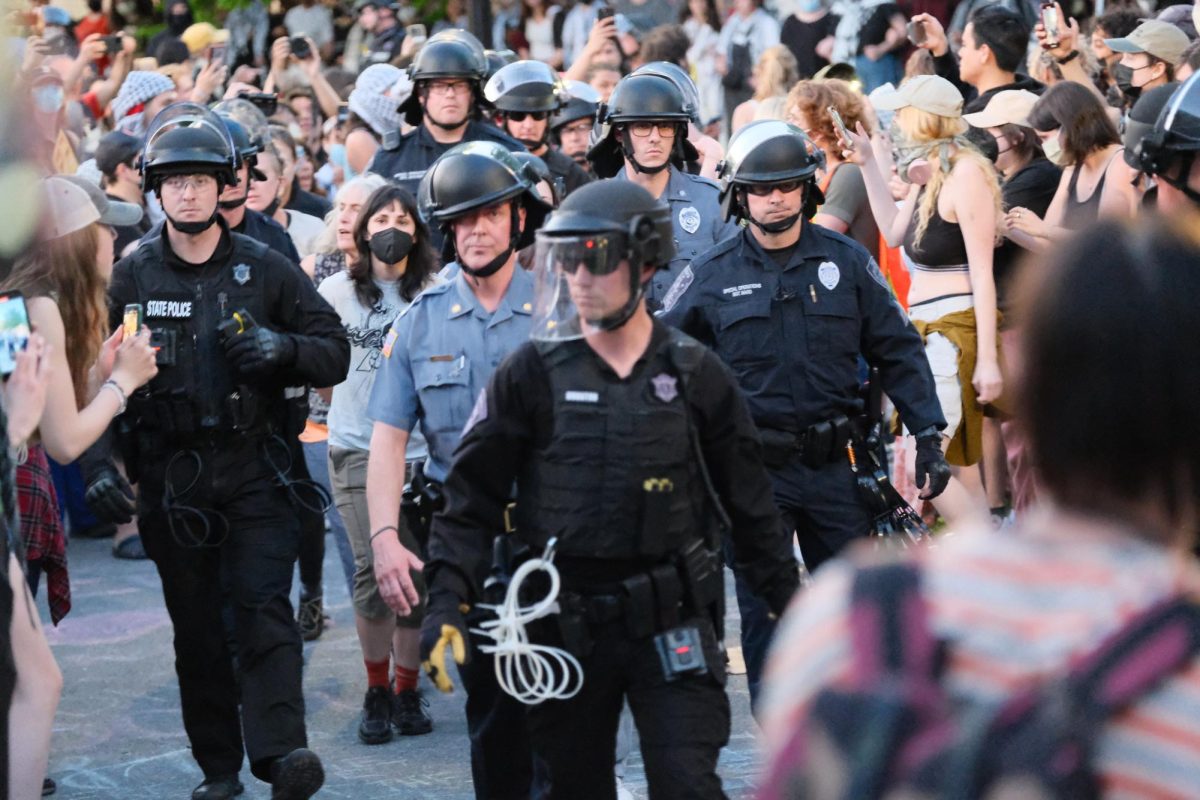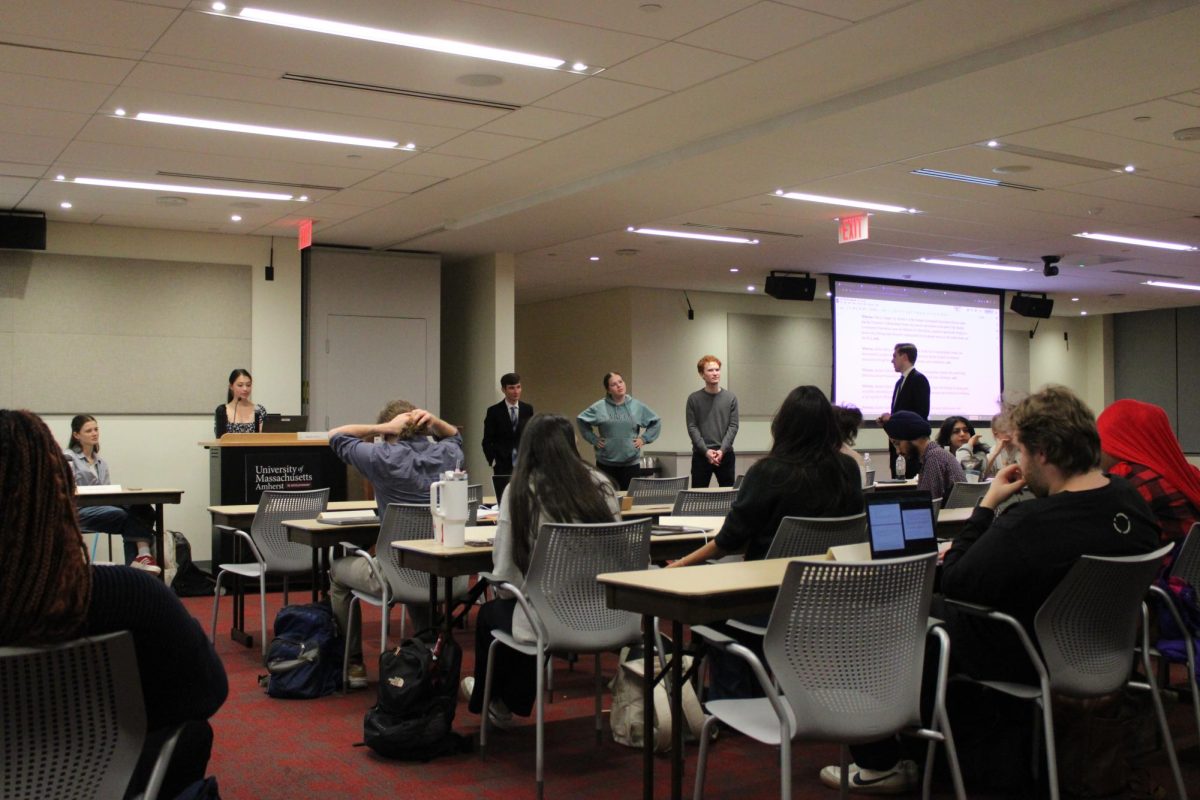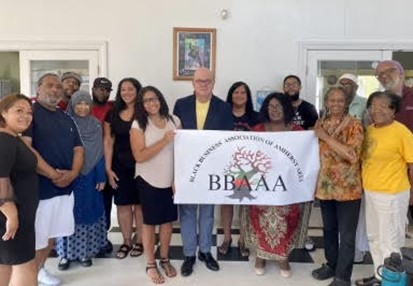While nearly 200 University of Massachusetts students were occupying the Goodell building in March of 1997, Justin Beatty and the other Native students in the building would sing traditional Native songs to pass time.
The singing and echoing of the powwow drums filled the halls and attracted the curiosity of the other students taking part in the takeover. Eventually, the Native students taught them the Stomp Dance, a traditional call and response song. On the last day of the occupation, the Native students were asked to lead the group out of the building, and all the students performed the Stomp Dance together as they made their grand exit.
This moment of solidarity filled Beatty with pride. The students had been occupying the building for nearly a week straight, frustrated over UMass’s lack of effort in retaining and supporting the population of African, Latino, Asian, and Native American students, as well as first-generation and low-income students. Although the Native and Indigenous students were one of the smallest groups on campus, he felt that they were being respected and recognized when they were asked to lead the group out of the building.
Beatty, who is of Ojibwe, Saponi, and African-American descent,and other Native American and Indigenous students have long struggled to demand support from the University, but have remained a small but strong force on campus for decades.

“My experience overall in the 90s, as a student, was powerful,” Beatty said. “I met a lot of amazing Native students from all over the United States, most of whom I’m still friends with to this day, and we still support each other and see each other when possible.”
Community organizations and cultural centers, like the Native American Students Association and Josephine White Eagle Cultural Center, have created platforms for students to express their Native identity with pride and have existed as solid ground to stand on. They have also stood as a means to educate other students on campus about Native culture and heritage, as well as a learning opportunity for reconnecting Natives.
“One of the really cool things about the Native community at UMass Amherst is that it’s made up of such a diverse group of Native folk…they tend to be very welcoming, even of reconnecting Natives, people that weren’t exposed to their own cultures growing up…they have a chance when they come here to meet and connect with culture,” Beatty said.
The Native and Indigenous students at UMass have fostered a tight-knit community who remain in close contact to this day. Beatty describes the community in Western Massachusetts as “a large, solid and relatively tight knit community of folks,” that are available to provide the younger generations with home cooked meals, transportation, and other necessities.
Alumni like Beatty, who describes himself as a cultural educator and visual artist, and Carlos Peña, who describes himself as an ‘artivist,’continue to educate their local community on Native American, Indigenous, and First Nations culture, often using art to do so. The two met at UMass and remained in touch, and together they began an art exhibit at Peña’s custom apparel and screen-printing shop, Paper City Clothing Company, in Holyoke.
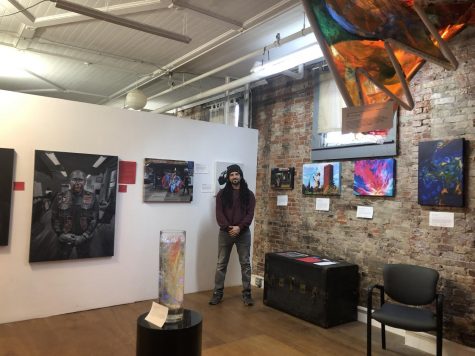
This year, they organized the November Red art exhibit for the second time, an exhibit showcasing art by Native American and Indigenous artists from Nov. 5 to Dec. 18. Peña wanted to provide a space for “people that don’t have the resources or means” to exhibit their art in other spaces. He initially reached out to Beatty to showcase his art, and they have since displayed and sold work from various artists, including Ella Nathanael Alkiewicz, who also attended UMass.
Alkiewicz is indigenous to Labrador, Canada. As a Labrador Inuk from, she is one of 65,000 Inuit people. Alkiewicz creates digital art, painting, beaded necklaces, and Orange Shirt pins that represent the Canadian Residential Boarding School, which her mother is a survivor of. Alkiewicz uses art as a means to express pride and joy in her Inuit culture and also heal and reconcile with her difficult past.
“For years, I was abused and poor and depressed, and so I didn’t express myself and I wasn’t happy. And now I’ve been able to work through all that and heal all that. So now it comes out,” Alkewicz said. “Art is important to me, because I can express myself and my culture.”
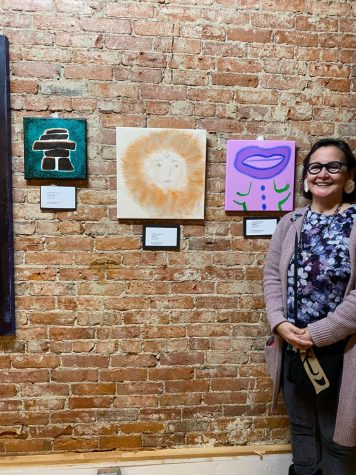
Peña also spoke on the storytelling and healing potential of art.
“Art is a form of history, and actually telling a story in a different form,” Peña said. “It holds the essence of life inside of it and [it’s] a perspective that anybody can take part of. So, it allows other people to be part of that moment. I think art is therapy, art is healing.”
Beatty and Peña emphasize that the work that goes into a piece of art is far more than the few hours that it took to physically put it together. Years of experience, that not only the artist but their ancestors collected, culminate to the point in which that artwork is created. This is something that people should understand before putting a price on art, they both stated.
“All that experience from generation to generation is transferred,” Peña said.” And to have it put on paper, finally after so long, it’s like a mission in itself. There’s no way you could replicate that ever.”
Peña is Taino, a group indigenous to the Dominican Republic, and grew up in New York City before attending UMass. Peña’s experience at UMass continued until 2018, when he graduated with a BDIC social justice and primate behavior degree. However, his first experience began in the mid-1990s, when he began staying at a friend’s dorm room and attending his classes. Peña passed time as an unofficial student but a core member of the Native community on campus. Although he is not Native to North America, Peña felt connected to the other Native students on campus because they shared a mutual history of “settlers coming into our space and taking over our space,” he said.
“It brought a light to how we were family more than we were strangers to each other,” Peña said. “We became warriors”
Peña also participated in the Goodell takeover. Because he was not officially enrolled in the University yet, he could go in and out of the building when something was needed without fear of punishment from the University. The students initially planned to take over the Whitmore administrative building but had to steer their plan after someone infiltrated the group and reported their plan to administration, Peña explained.
Peña also remembers the “crazy” outpouring of community support the students received at the time, as they would receive food and other necessary supplies from the businesses and organizations in the town.
Beatty’s own UMass experience began in 1992 and continued until 2018, as he took breaks to work and take care of his son who was born in 2000. He graduated from UMass with a Bachelors in Indigenous, policy, culture, and art through the University Without Walls program.
When Beatty began attending UMass in the early 90s, there was a rich Native American and Indigenous community at the University. The Native Studies certificate program, now offered through BDIC, was growing and attracting national attention. Groups like the Native American Students Association and the campus chapter of the American Indian Science and Engineering Society were safe havens for the roughly 100 Native American and Indigenous students on campus, Beatty explains.
“As our numbers increased, the visibility increased, there was a lot of interaction between the Native students and other groups on campus,” Beatty said. “Diversity isn’t just having a bunch of different people. is having a bunch of different people that are consistently interacting and learning from each other”
The Native and Indigenous community, however, struggled at times due to the ignorance of others.
“There were a lot of difficulties due to the lack of education around Native people in general and the lack of education around Native people being on campus,” Beatty said.
For example, students on the upper levels of Chadbourne would use hockey sticks to bang on the window of the Josephine White Eagle Cultural Center on the bottom floor. Many Native students would burn sage and tobacco for the ceremonial practice of smudging, and this would often be scrutinized and lead people to call law enforcement.
When Alkiewicz, a 2012 alum of Journalism and Native studies, was attending UMass, she also found comfort in communicating with the other Native and Indigenous students. Because she was a single mother at the time, she didn’t have the same experience as other students. She would go to class, hang out with the Native students, and go home to take care of her child.
One of the things she most struggled with was being “whispered about” within a couple feet. This made her uncomfortable, but she found she could confide in the Native students.
“It was a community that helped me get through UMass, totally,” Alkiewicz said.
Although Beatty states that education is important, the constant need to educate others could lead Native students to “shrink” themselves.
“You don’t want to have to spend all your time educating,” Beatty said. “You don’t want to be a novelty, you want to just be yourself….that was part of my attitude and experience then was to educate people and to be myself, like, unashamedly unabashedly, who I am culturally.”
Beatty often carries his cultural identity by wearing traditional wear, wearing a beaded medallion and wampum earrings as he speaks.
Beatty emphasizes the importance of having cultural centers like the Native American Student Association, not only for educating others but for providing the community with comfort and support, especially for those who are far from home.
“[Native students] are looking for connection, they’re looking for familiarity, they are looking for a place where acceptance comes without issue, you know, it can be very isolating on campus,” Beatty said. “You’re tokenized you’re seen as like this like exotic thing…they don’t often see us in a modern contexts”
Now, Beatty uses his art to combat the idea that Native people are “extinct.”
His artwork often depicts Native people in traditional clothing in modern, urban settings, including “A Native of fancy dancer in front of the bodega,” or “an Aztec warrior standing in the middle of Times Square.” Beatty grew up as one of three Native families in Roosevelt, New York, and the urban settings of his upbring heavily influences his artwork.
Up until the point he began creating digital art, Beatty’s art style developed many times. When he traces back his interest in art, he remembers the drawing book he would beg his mom to get from the book fair. During a time when hip-hop, break dancing, and graffiti were at the forefront of popular culture, Beatty joined the New York graffiti scene. Beatty created designs for shirts and tattoos until he finally began creating and selling his digital art, which is on display at the November Red art exhibit.
Beatty is also a part of a powwow drum group called Urban Thunder and the organizer for the annual Amherst powwow. He had a vital part in organizing the 2021 Amherst powwow, which took place virtually, and is also working to organize the 2022 Amherst powwow, which will take place in the Amherst town common on Memorial Day weekend. UMass also has its own annual powwow.
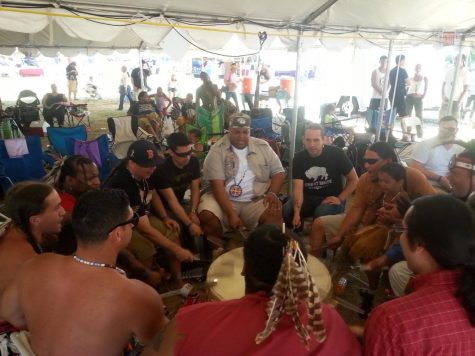
Powwows are a lively Native American social gathering and a celebration of culture with traditional music and dance taking place throughout the day. There are also performances, activities for children, and vendors providing hand-crafted goods, filling the town with sounds of celebration. They often include dances in which the public can participate in and a dance to honor veterans.
“They’re all considered important to the community because…. you’re in our homeland, and you’re helping to defend it and protect it. Regardless of whether or not there’s an agreement on the behavior of the American government or not, you’re still protecting the people,” Beatty said in reference to veterans.
Considering the centuries-long effort to eradicate Native Americans from the land, powwows are very important for the Native cultures across North America. The town of Amherst is named after Jeffrey Amherst, a person who suggested carrying out biological warfare against the Native population, so the Amherst powwow holds a special significance for the diverse Native presence in the town, Beatty explained.
“The fact that [Native people] are still here on the town common, I think is incredibly important, and a vital statement to understanding our resilience as native peoples,” Beatty said. “Powwows are generally a way for us to express ourselves and celebrate who we are, and connect with each other and reconnect with family and friends.” Powwows are also an opportunity for non-Native people to learn about the people and culture, Beatty explains.
The virtual event had 84,000 viewers and Beatty is hoping that the upcoming event will attract hundreds of Native and non-Native people. Beatty is also working with Amherst College to develop a traditional medicine garden to grow medicines that are part of specific indigenous cultures in his efforts to maintain the Native presence in the area.
Beatty states that UMass should be at the forefront of supporting Native and Indigenous students and people in the community, but Alkiewicz and Beatty have both noticed that both the community presence and support systems have dwindled on campus since their time attending.

The number of Native students at UMass has drastically since the 90s. As of the fall 2021 semester, there are only 25 students who identify as American Indian or Alaska Native.
Native American Student Services Office was an essential resource for Alkiewicz, as she could drop off her child for babysitting while attending night classes. However, it was shut down during her time there. Alkiewicz still remains in contact with Joyce Vincent who headed the office, and refers to her as an “auntie.”
“It seems as though the administration for whatever reason, doesn’t see us as fiscally viable to support,” Beatty said in reference to the lack of resources.
He believes that UMass should be a leader of Native education.
“You have a school that is sitting on indigenous people’s lands…You have an extremely marginalized communities of neighbors, who are constantly inundated with imagery and messaging about our lack of value in the world. And you have an opportunity here -specifically that UMass should be possibly the premiere place for Native education.”
Before 2021 there were talks of the administration moving all of the cultural centers and advocacy, inclusion, and support groups into Goodell, although there has been no recent announcement from the University on this topic as plans have been disrupted by COVID-19. Beatty believes this is a bad idea because it lumps all marginalized people into a homogenous group, and because “the groups on campus that have more people are going to dominate that space.”
“The ways that we would seem to be dealing with a lot of these groups is just kind of putting them under an umbrella,” Beatty said. “We don’t have the same needs. You’re pigeonholing us, you say we only have value in this area, and not out with everybody else.”
Beatty urges the administration to listen to Native people to shape their decisions, and hopes that people recognize that Native people are not a “monolith” as there are hundreds of different Native cultures. Beatty, Alkiewicz, and Peña all urge the public to care about Native and Indigenous people regardless of whether the spotlight is on them in the moment.
“November is Native American Heritage Month. And all the attention the media has been putting on Native American Heritage Month is great. But I don’t want people to forget Dec. 1. on,” said Alkiewicz. “We’re still here, we’re not extinct, we are not from the 1600’s, we’re contemporary, intelligent, professional people,”
Similarly, Peña hopes that “people don’t just celebrate for the occasion.”
“We’re still here. We’re still around, we vary tremendously, in how we look, what we do, where we live…it’s not a one size fits all Native American thing,” Beatty said.
Beatty also urges people to stay in touch with their cultural origins to appreciate their own and that of others. “Everybody comes from an indigenous culture somewhere in the world, and I think that more folks need to try to connect with that. That’s what I tried to make sure I did every day,” Beatty said. “Learn a single prayer in your indigenous language so that you can speak to your ancestors. And I think when people start to do things like that, that allows them to see not only the beauty of their own culture, but the beauty of other cultures.”
“We are capable of such beautiful things, culturally and individually.”
Saliha Bayrak can be reached at [email protected] and followed on Twitter @Salihabayrak_.

